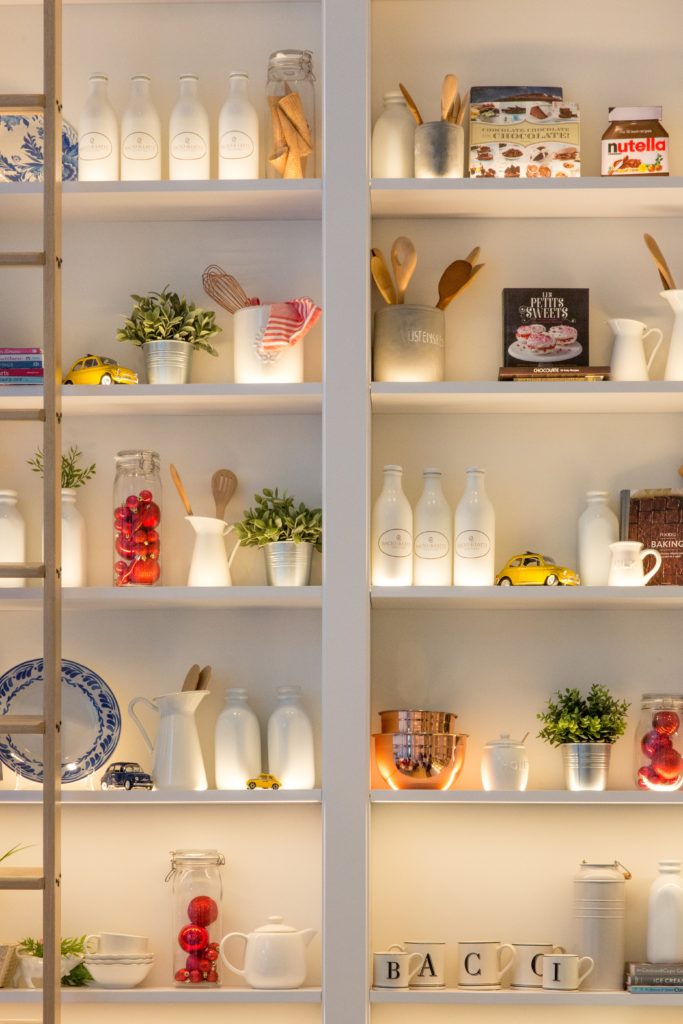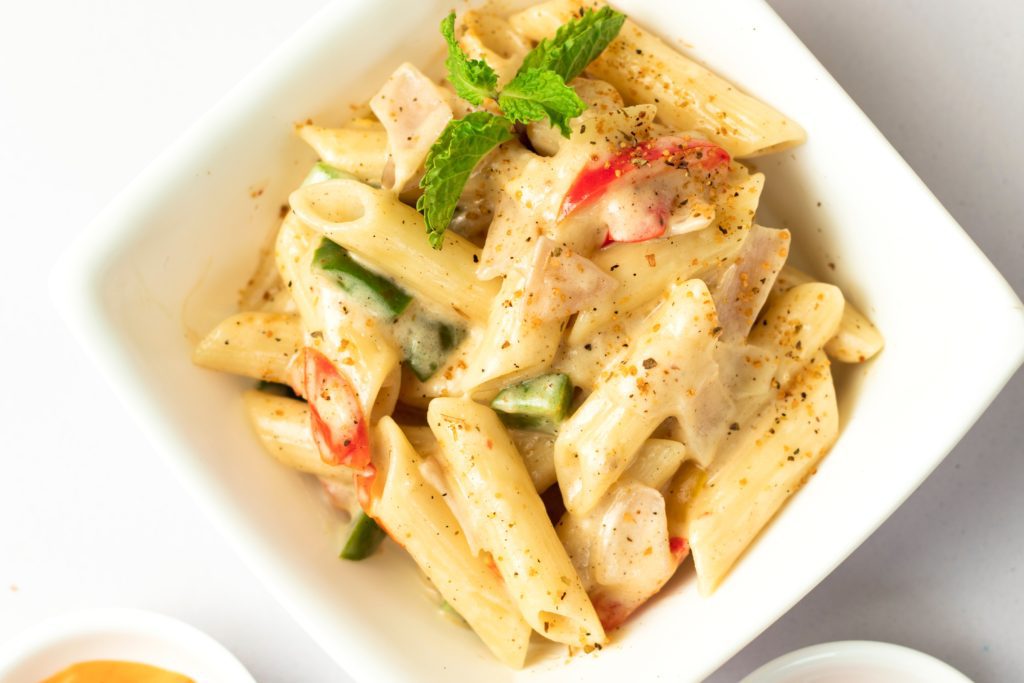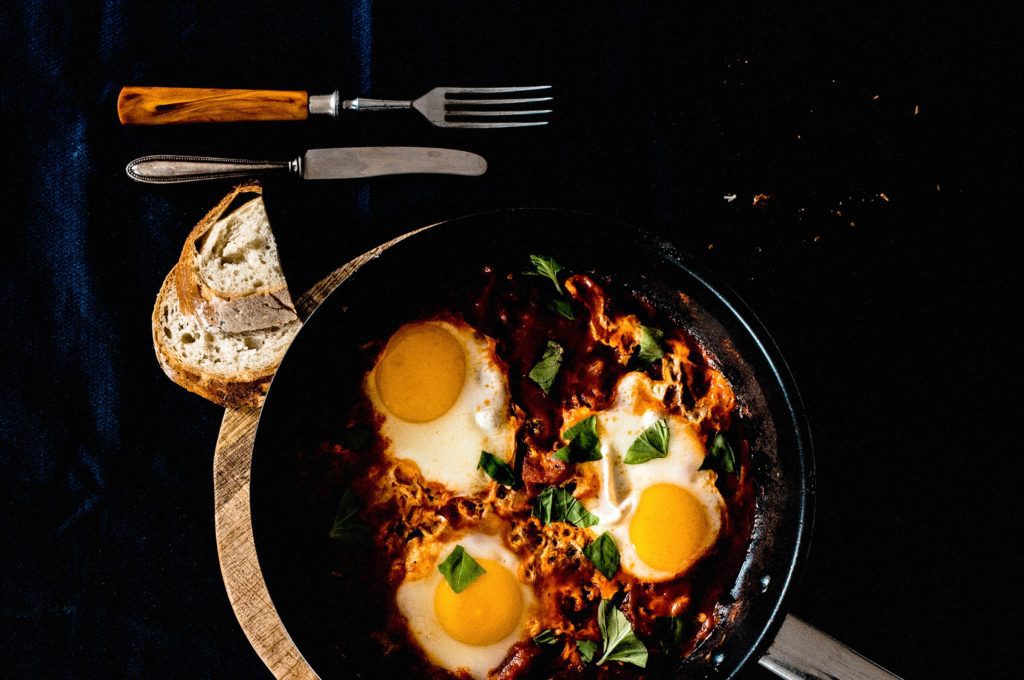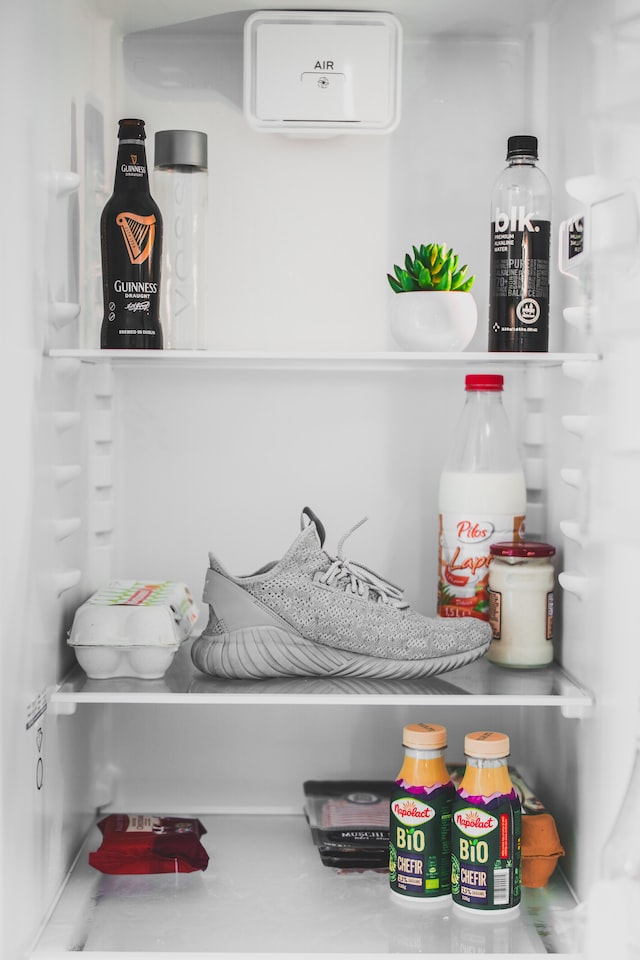
A complete Kitchen Essentials checklist of all basic but frequently used foods that you should keep in your freezer, fridge and pantry (cupboard) all the time.
What are the essential foods you should always have in the kitchen?
Eating the right foods can be difficult when you have such a busy life. That’s why knowing the best foods to always have in the kitchen is so important.
If you’re life is anything like mine, you won’t always have time to make the perfect food. Sometimes simply getting any food is good enough, never mind the right food. This is especially difficult towards the end of the week when last week’s grocery shopping has all but run out.
This is where having the right types of food to make preparing nutritious meals or quick snacks is so important. With the right foods in the cupboard, fridge and freezer you’ll give yourself the chance of always being able to get your body what it needs.
Having 3 children under 3 including twins under 1 as well as a demanding career, I’m always trying to find hacks around the home.
Cupboard Essentials: What essential foods should you always have in the cupboard?
Tuna: Canned tuna has become one of our secret weapons in the kitchen over the last year or so. It’s great as you can buy packs of cans to suit your needs and meal sizes then simply forget about them. Their shelf-life means it can go in the cupboard for months until you find you really need it.
When the time comes however, you’ll be glad you have them. We use tuna:
- To mix into quick pasta dishes (usually combined with an easy milk, cheese, paprika and pepper sauce)
- For making sandwiches mixed with mayonnaise and whatever vegetables are readily available eg tomatoes and avocado
- As a topping for grilled garlic bread finished with mozzarella or cheddar, our favourite Truff Gourmet hot sauce and any vegetables going e.g sweet corns.

Pasta: This is often our go-to solution when we don’t quite have enough time for anything more elaborate than a simple pasta dish. Depending on how you like your pasta done, it can be ready to go inside 10 minutes. It’s versatile and you can switch it up between white and whole grain varieties to make sure you get all the nutrition you need.
The great thing with a batch of pasta is that you can eat hot or cold so whatever you have left in the fridge, cupboard or freezer can be tossed in.
Bread: This may seem obvious but it can be easy to forget. Bread gives you a lot of choice for quick snacks and meals. From simple sandwiches like a classic tuna mayo, to the humble toast and further still, with a reliable loaf of bread around you’ll never be short of sustenance. If you’re worried you may not get through the bread before it expires you can always freeze (something we do in our house). This is particularly handy if you have a toaster with a defrost function.
Fridge Essentials: What essential foods should you always have in the fridge?

Eggs: When you are armed with eggs in the fridge, you can tackle any hunger attack. Eggs are versatile and can be a meal in their own right or combined with other quick foods for a hearty and filling meal. Full of protein and easy to blend in with spices (try scrambled eggs with black pepper and smoked paprika to see what we mean), eggs can keep hunger at bay when the chips are down.
Hard Cheese: A hard cheese with a strong taste and long-shelf life is always a good idea. Mixed in a with a bit of milk and pasta you’ll have yourself a tasty meal. Alternatively a hard cheese like cheddar works nicely mixed in with eggs or simply as a filling for a quick toasted sandwich. Whatever you do with it, having a nice block of cheese in the fridge means you’re only ever one step away from turning an ordinary quick snack into a great one.
Fruit: We all know eating fruits is an essential part of the diet but that’s not always easy to do. That’s why making sure you always have some fruit readily available is so important. Apples tend to make excellent fridge essentials as they can keep for a number of weeks without degrading in taste or quality. They are also great for juicing, making smoothies or just eaten on their own.
Freezer Essentials: What essential foods should you always have in the freezer?
What foods should you always have in the freezer?
Frozen Vegetables: Frozen vegetables such as sweetcorn, peas and carrots can come in handy with a variety of dishes so it always makes sense to have them available. They can easily help you add an extra layer of taste to otherwise simple meals as well as making sure you’re getting vital vitamins and nutrients.
Pre-Cooked Dishes: Wherever possible try to cook more than you will need for a particular meal and freeze the rest. A particularly good option for this is minced meat in a bolognese sauce like lamb or turkey. In our house we like to make large batches (e.g. 1kg) of turkey mince in a bolognse sauce that can be easily frozen and then used alongside pasta or jacket potatoes.
Another good option in this area is pre-cooked soup. We particularly like making butternut and sweet potato soup and then freezing it. Often times you can find that as the flavours have had time to settle, the soup tastes even better out of the freezer.
Following is a comprehensive list of frequently used foods to be stored;
Kitchen Essentials: In the Pantry
Breakfast & Cereals
- Cereal (consider whole grain varieties)
- Butter (keep it in the fridge)
- Bread / Rusk / Bagles / Muffins
- Oatmeal
- Pancake mix
- Canned, Jarred, & Pouched Foods
- Weetbix for kids or Adults
- PeanNut butter
- Jams / Spreads (Nutella)
- Honey
- Desi ghee
Tip: Add 1tsp desi ghee in bowl of weetbix with honey and warm milk for extra immunity. Use Pure Jaggery instead of Sugar (if honey isn’t available), its helps in blood purification and a good alternate to refined sugar. Honey has low GI than both Jaggery and sugar.
Fruits and Vegetables
Choose raw and fresh fruits, avoid frozen fruits and vegetables as much as possible. The only frozen vegetables we recommend are;
- diced tomatoes,
- chopped spinach,
- sliced yam or colacassia
- ladyfingers
- as they all cost generally less from fresh veggies and comes very handy.
Meat, poultry, & seafood
- Beans (kidney, black eyed, black, garbanzo)
- Fish, Chicken, Mutton or other meats.
- Soups (look for lower sodium varieties)
- Nuts (almonds, walnut, pistachio, pine nuts, macadamia. Avoid salted or smoked, and always go for natural unsalted nuts)
- Sauces (tomato, soya, chili, oyster)
- Diced tomatoes
- Chickpeas (canned)
- Kidney beans (canned)
- Broth or stock (chicken, beef or vegetable)
Grains, Pasta & Sides
- Bread (consider whole grain varieties)
- Tortillas or taco shells
- Pasta (consider whole grain varieties)
- Rice (include some whole grain rice, such as brown rice)
- Oats (old fashioned or rolled, quick, or steel cut)
Produce
- Onions
- Potatoes
- Tomatoes
- Garlic heads
- Green Chilies
- Pepper Mint
- Coriander
Snack
- Crackers (consider whole grain varieties)
- Popcorn
- Fresh Sweet Corn Cobs
- Nuts (almonds, walnuts, etc.)
Baking & Cooking supplies
- Instant nonfat dry milk
- Flour (consider whole grain)
- Sugar (white granulated, brown)
- Seasonings & spices (salt, black pepper, garlic, minced onion)
- Oil for cooking (such as olive, canola, vegetable)
- Vinegar
Condiments & Salad Dressings
- Ketchup
- Mustard
- Mayonnaise (choose a lower fat option)
- Salad dressing
Kitchen Essentials: In the Refrigerator
- Milk (fat-free or low-fat)
- Cheese (block, shredded, sliced, or string and consider lower fat options)
- Yogurt (fat-free or low-fat and choose options with fewer or no added sugars)
- Eggs
- Fruits
- Vegetables
- Butter or margarine
Kitchen Essentials: In the Freezer
- Fruit
- Vegetables
- Meat & seafood (chicken breast, minced fat-free beef, turkey, lamb chops, salmon, shrimp)
- 100% fruit juice concentrate (better to extract juice yourself or even better to eat raw fruit)
- Breads (consider whole grain varieties)


